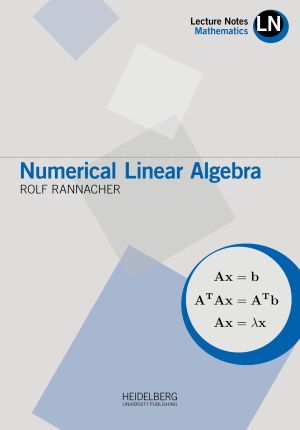
Zitationsvorschlag
Lizenz

Dieses Werk steht unter der Lizenz Creative Commons Namensnennung - Weitergabe unter gleichen Bedingungen 4.0 International.
Identifier
Veröffentlicht
Numerical Linear Algebra
Dieser einführende Text basiert auf Vorlesungen innerhalb eines mehrsemestrigen Zyklus ”Numerische Mathematik“, die der Autor an den Universitäten Saarbrücken und Heidelberg gehalten hat. Im vorliegenden Band werden die Konzepte numerischer Verfahren zur Lösung linearer Optimierungsaufgaben (sog. ”Lineare Programme“) entwickelt. Dazu gehören neben dem klassischen ”Simplex-Verfahren“ insbesondere auch modernere ”Innere Punkte-Methoden“. Als naheliegende Weiterungen werden auch Methoden für konvexe nichtlineare, speziell quadratische Optimierungsaufgaben diskutiert. Dabei finden sowohl theoretisch-mathematische als auch praktische Aspekte Berücksichtigung. Das Verständnis der Inhalte erfordert nur solche Vorkenntnisse, wie sie üblicherweise in den Grundvorlesungen über Analysis, Lineare Algebra und Numerik vermittelt werden. Zur Erleichterung des Selbststudiums dienen theoretische und praktische Übungsaufgaben mit Lösungen im Anhang.





